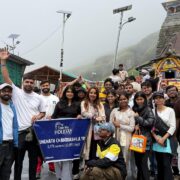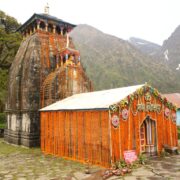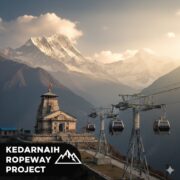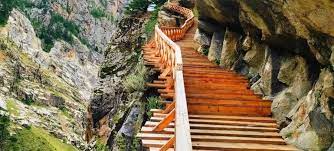
Harsil in Monsoon: A Soulful Journey into the Himalayan Heartland
Harsil Valley Tour Package from Delhi begins as the clock struck 10, the city lights of Delhi slowly faded into the distance. From Botanical Garden Metro Station, our journey began not just across kilometers, but into a world kissed by clouds and wrapped in pine-scented silence. It was the start of our Harsil Valley tour package from Delhi, and excitement crackled in the air like static before a monsoon storm.
The bus hummed lullabies while the road curled its way north, and with every passing hour, the heat of the plains gave way to the crisp whispers of approaching hills. Somewhere past midnight, drowsiness tugged at our eyes, but the thought of Harsil tucked deep in Uttarakhand’s lush folds kept our hearts awake.
“Where the rivers sing and pine trees sigh,
That’s where the soul learns to fly.”
This wasn’t just a getaway it felt like the Himalayas were calling us home. A group of strangers turned travel companions, our backpacks were packed with woolens and wishes. We didn’t know it yet, but Harsil would unravel more than scenery it would stir stories and serenity in ways we hadn’t imagined.
The night wore on as our wheels rolled towards Uttarkashi, the gateway to our Himalayan reverie.
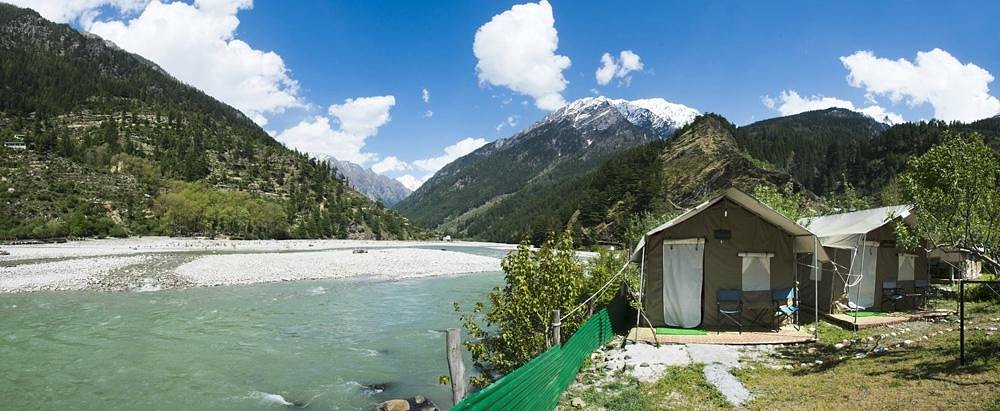
Into the Pines: Uttarkashi to Harsil Valley Route Unfolds
As dawn crept over the horizon, golden streaks of light danced on the Bhagirathi River, guiding us into the lap of Uttarkashi. From here, the route to Harsil Valley is a spellbinding drive just 70 kilometers, but every bend holds the poetry of the mountains. The air grew cooler, pine trees stood tall like guardians of the hills, and waterfalls gushed like nature’s applause.
The Uttarkashi to Harsil Valley route is nothing short of cinematic. Steep cliffs, dense deodar forests, and playful glimpses of the river kept us wide-eyed throughout. Locals say the road was once a pilgrim’s test now, it’s a dreamer’s path. Our tempo traveller navigated the narrow curves carefully, offering sudden bursts of valley views that left us gasping in awe.
“On winding roads where silence roams,
The valley whispers: ‘You’re almost home.’”
We stopped at a roadside shack for chai and aloo paratha, served with stories and smiles. With each kilometer, mobile signals faded, but our connection with nature deepened. Harsil was no longer a dot on the map it was a feeling, growing stronger with every breath of mountain air.
Soon, the emerald slopes of Harsil welcomed us quiet, humble, and overwhelmingly beautiful.
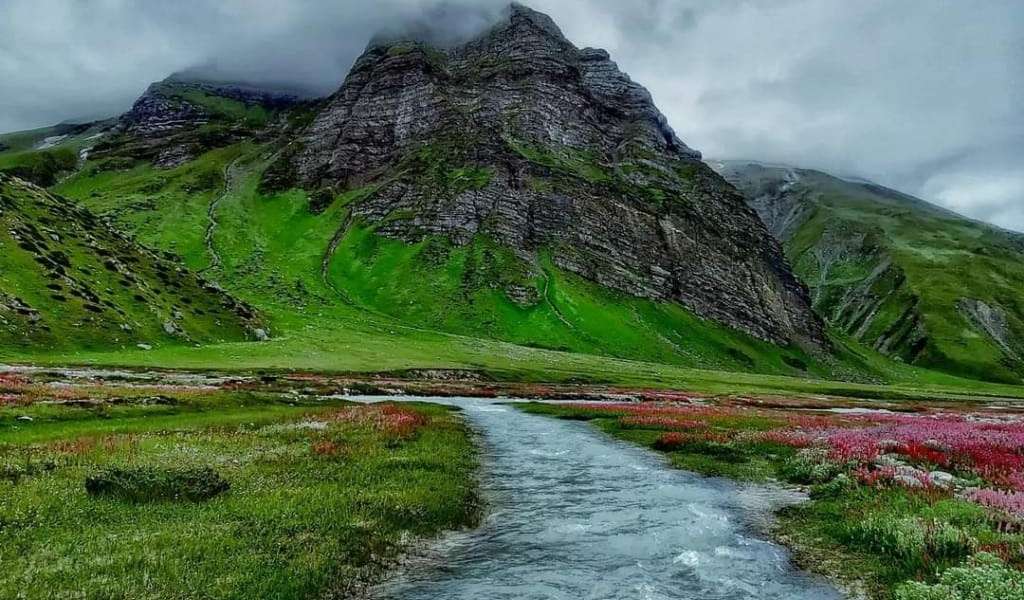
Arrival in Paradise: First Impressions of Harsil in Monsoon
The moment we stepped into Harsil, it felt like entering a forgotten dream one painted in greens and greys, wrapped in the hush of the monsoon. Raindrops kissed the cedar roofs, clouds swirled playfully over snow-dusted peaks, and the Bhagirathi flowed beside us, wild and lyrical. Every leaf glistened with fresh rain, every stone told a story.
Monsoon turns Harsil into a wonderland. The meadows shine brighter, the pine-scented air feels purer, and the chirping of birds echoes louder. The drizzle added a cinematic touch to our arrival—umbrellas popped open, boots splashed into puddles, and laughter filled the air. Even the locals smiled knowingly, as if saying, “This is the real Harsil.”
“Let the rain fall where the heart calls,
Harsil’s magic breaks all walls.”
The tiny village market just a few shops lined along the road welcomed us with hot chai and woollen handcrafts. We settled into our riverside homestay, where wooden balconies offered uninterrupted views of green hills and floating clouds. No traffic, no rush, just the sound of rain and the rhythm of river. That first evening, wrapped in shawls and sipping pahadi tea, we knew we hadn’t just arrived in Harsil, we had arrived in peace.
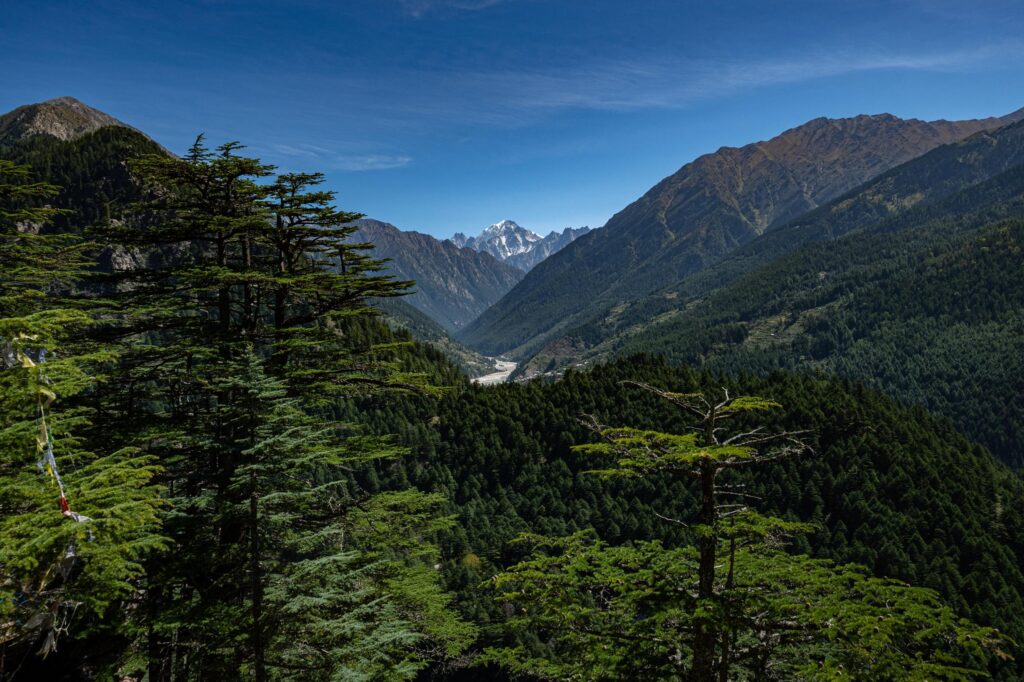
The Morning Mist Trail: A Walk Through Nature’s Canvas
Waking up in Harsil during the monsoon is like rising inside a poem. The morning mist curls through the deodars like whispers of the mountains, and the scent of wet earth fills the air with a comforting calm. As we stepped out for a short nature walk, the trail ahead looked like it had been painted fresh by the rain gods themselves.
Each step on the muddy path was a brushstroke through nature’s canvas lush ferns on either side, moss-covered stones glowing emerald, and distant waterfalls cascading like silver threads through the hills. Tiny wildflowers peeked out shyly from the undergrowth, and the chirping of bulbuls and thrushes made for a melodic soundtrack.
“Where clouds touch trees and silence sings,
Monsoon in Harsil gives your soul wings.”
We wandered through apple orchards with fruits still ripening, and passed quaint wooden homes with smoke curling from chimneys. Occasionally, we’d stop just to take it all in the way the mist danced around us, how the river shimmered below, and how everything felt untouched, almost sacred.
That trail wasn’t just a walk. It was a slow immersion into serenity a reminder that in Harsil, even a simple stroll becomes a spiritual journey.
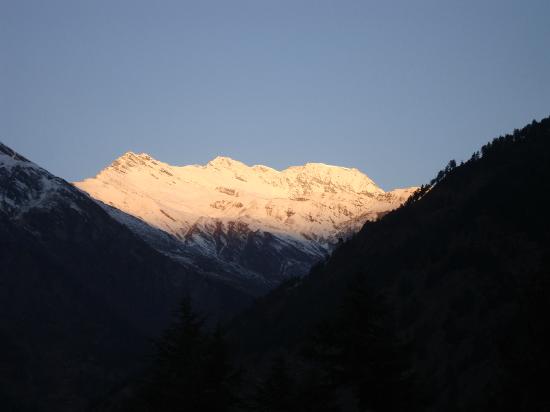
Gartang Gali Trek: Stepping into the Forgotten Path of History
The next chapter in our Harsil Valley journey took us to something extraordinary the Gartang Gali trek. Tucked within the Nelong Valley, near the Indo-Tibetan border, this historic wooden bridge trail was once part of the ancient Indo-Tibet trade route. Reopened recently, the trek is not just a path it’s a walk through time, carved into sheer cliffs above the Jadh Ganga.
Our Gartang Gali trek itinerary started early from Harsil. A short drive to the trek base, followed by a brief permit check, and we began the thrilling 2.5 km walk. The wooden plank trail hugged the rock face like a ribbon narrow, bold, and unforgettable. Below us, the Jadh Ganga roared wild, and above, clouds teased the jagged peaks.
“With every plank and every bend,
The past and present beautifully blend.”
It was an emotional walk imagine traders of yesteryear risking everything on this very path. Today, the Gartang Gali trek from Harsil offers not just adventure but a sense of reverence. The views are heart-stopping, but the silence? Even more so.
If you’re charting a Harsil Gangotri Gartang Gali itinerary, this trail is a must an awe-inspiring journey into both nature and nostalgia.

Mukhba Village Visit: Meeting the Soul of the Valley
Our journey wasn’t just about landscapes it was about stories, people, and emotions. And nothing embodied this more than Mukhba Village, a short but meaningful visit that brought us face to face with the spiritual and cultural heartbeat of Harsil Valley.
Mukhba isn’t just any mountain village it is the winter home of Goddess Ganga. When Gangotri becomes inaccessible due to heavy snowfall, the idol of Maa Ganga is brought here in a grand procession, where she is worshipped throughout the colder months. Visiting Mukhba in the monsoon meant experiencing its lush green beauty, traditional wooden houses, and warm-hearted villagers immersed in a rhythm of devotion and simplicity.
“In every smile, a welcome true,
In every prayer, the sky turns blue.”
We strolled through the cobbled paths, watching pahadi women in vibrant shawls tending to fields, and children chasing goats up the hill. Our local guide shared tales of the Gangotri Doli Yatra, the rituals, and the deep faith that binds the community.
If you’re crafting a soulful Harsil itinerary, don’t skip Mukhba. It’s not just a detour it’s a destination of the heart, where time slows down, and the divine feels near.
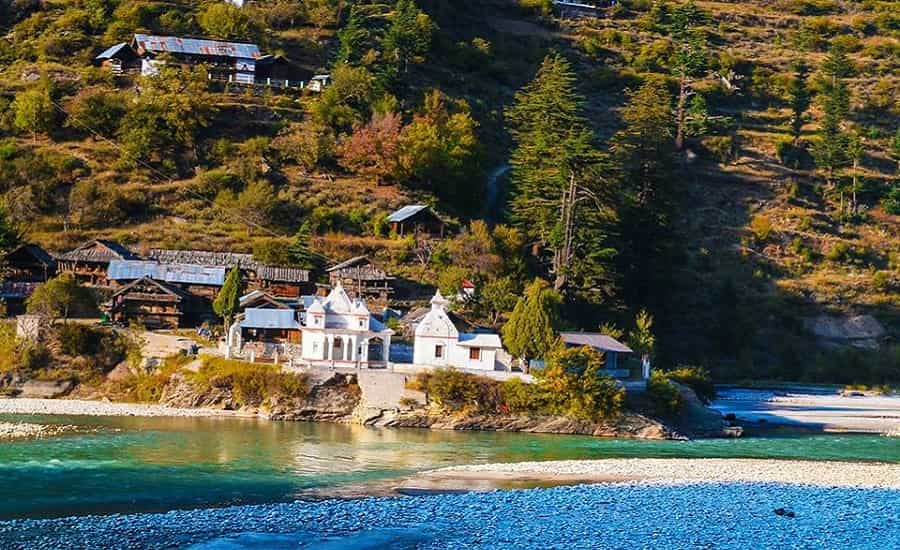
Dharali and the Apple Orchards: A Juicy Tale Amid the Clouds
If Harsil is the heart of the valley, then Dharali is surely its sweet soul. Just a couple of kilometers from Harsil, this sleepy Himalayan hamlet welcomed us with cool mountain breeze, pine-scented air, and most memorably lush apple orchards heavy with fruit. Visiting Dharali in the monsoon is like walking into nature’s own greenroom, where everything seems freshly washed, dewy, and alive.
“Where apples grow and rivers flow,
Dharali dances in a monsoon glow.”
The moment we arrived, the smell of wet soil and ripening apples filled the air. Rows of trees stretched across rolling slopes, each branch generously bowed with green and red gems. The orchard owners were kind enough to let us walk through, pluck a few fresh ones, and taste the sweetness of their Himalayan harvest. There’s something magical about biting into a crisp apple with rain-kissed mist swirling around you like nature’s dessert served fresh from the clouds.
Dharali is not just about apples though. It has a quiet, meditative vibe perfect for slow walks, journaling by the riverside, or just sipping chai while gazing at mist-covered peaks. We also visited a local temple dedicated to Lord Shiva, nestled amidst cedar trees, its tranquility only interrupted by the sound of the gushing Bhagirathi River nearby.
Locals here often share that their apples are “nature’s blessings,” and after that visit, we truly understood why. These orchards aren’t commercial they’re personal. Generations have tended to these trees, and their fruits taste of both labor and love.
So, if you’re booking Harsil tour package, make sure Dharali is on the map. Especially in the monsoon, it offers a postcard-perfect glimpse into Uttarakhand’s monsoon charm.
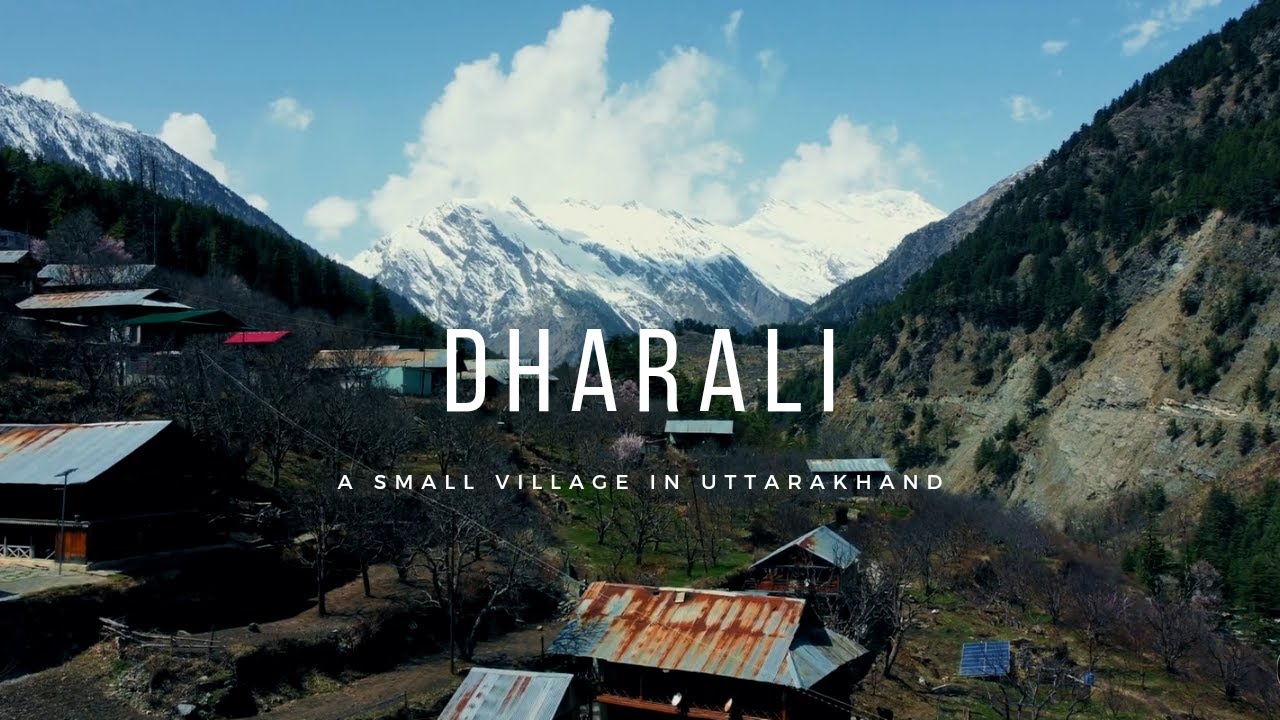
Offbeat Monsoon Trails: Lama Top and Mukhwa Village
For those who believe that real stories lie beyond the beaten path, Lama Top and Mukhwa Village are Harsil’s hidden chapters waiting to be read with muddy shoes and misty eyes.
Lama Top, perched at an altitude of around 2,700 meters, offers 360-degree views of the valley, with clouds often performing a slow dance around you. The trail to Lama Top in monsoon is not for the faint-hearted it’s slippery, wild, and incredibly green. Ferns brush against your legs, wildflowers dot the forest floor, and sometimes, the silence is so deep that even your heartbeat feels too loud.
“Climb where no echoes go,
Just clouds, just winds, just rivers that flow.”
We hiked up through damp pine forests, the trail occasionally giving way to open patches where the Bhagirathi sparkled far below like a silver snake. At the summit, Lama Top revealed her secret: solitude. Just us, the wind, and a flock of Himalayan monals.
On our way back, we stopped at Mukhwa Village a quiet settlement where the idol of Goddess Ganga resides during the harsh winter when the Gangotri temple is shut. The temple here may be small, but it holds immense spiritual energy. Monsoon gives the village a painter’s touch terraced fields glisten with new life, stone houses steam with hot tea, and children giggle through puddles.
Locals welcomed us with warm smiles and stories about the seasonal migration of deities, tales that made our journey richer than any guidebook could. We even got to try some freshly churned butter and rotis made from mandua (finger millet) simple, hearty, and unforgettable.
If you’re crafting a Harsil holiday package, ask your tour operator to include these two gems. Because in the end, it’s these offbeat whispers of the mountains that make the loudest impact on the soul.
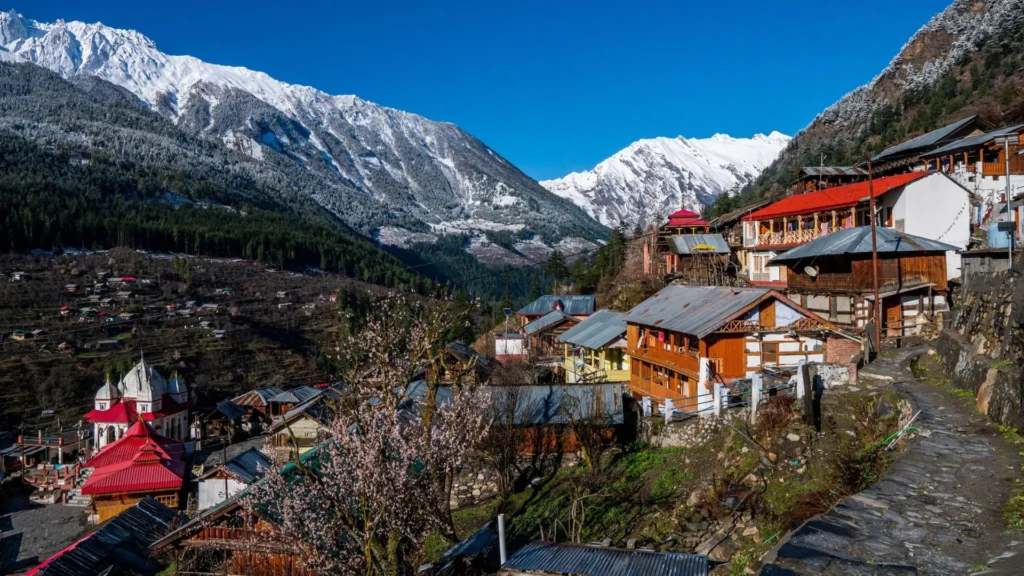
Exploring Dharali, Mukhba & Gangnani: Harsil’s Sacred Neighbours
As Day 3 begins, we venture beyond Harsil’s quiet heart and into its charming surrounds each place steeped in stories, spirituality, and serenity.
First stop: Dharali, just 2 km from Harsil, nestled amidst apple orchards and cedar trees. This little village is a picture of Himalayan bliss. The wooden homes, their rooftops glistening with morning dew, and the simplicity of pahadi life offer a raw, unfiltered glimpse into Uttarakhand’s soul. Don’t miss the local temple or the riverside walk, where legends flow as freely as the Bhagirathi.
Next up is Mukhba, the winter seat of Goddess Ganga. When Gangotri is covered in snow, the idol is ceremoniously shifted here, and the temple in Mukhba becomes a hub of devotion. Set against the dramatic backdrop of towering peaks and forested slopes, the spiritual aura here is truly magnetic. Even in the monsoon, Mukhba stays enchanting, wrapped in mist and melody.
Finally, we head to Gangnani, known for its hot sulfur springs, a perfect ending to our pilgrimage through nature. The thermal bath is believed to have healing powers relieving not just aches, but also emotional weight. A dip here, with rain clouds swirling above and the Bhagirathi roaring below, is a poetic cleanse.
“Where water heals and mountains pray,
Peace finds a home and hearts find a way.”
Together, Dharali, Mukhba, and Gangnani form a triangle of tranquility, just a short ride from Harsil. Their presence adds depth to your journey, offering not just sights, but insight into local culture, beliefs, and the timeless rhythm of Himalayan life.
If untouched beauty and silence speak to you, Harsil in monsoon will steal your heart.
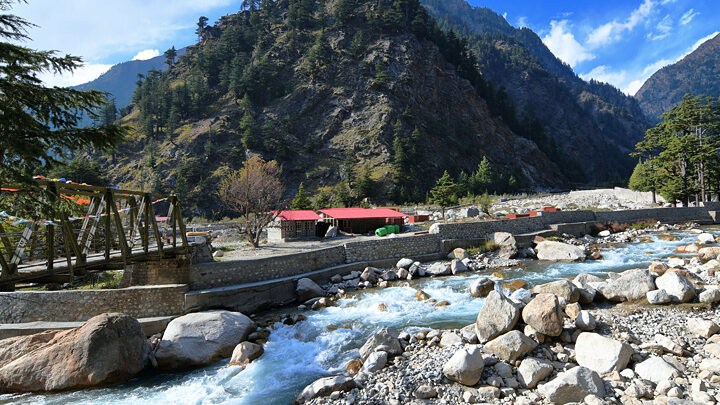
20 FAQs About Visiting Harsil in Monsoon 2025
1. Is it safe to visit Harsil during the monsoon season?
Yes, Harsil is generally safe in monsoon, but keep an eye on weather updates and avoid traveling during heavy rainfall days. Roads can occasionally get blocked due to landslides, so always travel with buffer time.
2. How to reach Harsil from Delhi in monsoon?
Take a train or bus to Dehradun or Rishikesh, then hire a cab or take a local bus via Uttarkashi. Roads are scenic but winding, so drive cautiously during rains.
3. Are there good accommodation options in Harsil?
Yes! You’ll find budget homestays, riverside camps, and a few mid-range hotels. Booking a Chakrata Holiday Package or similar Garhwal Himalayan tour often includes accommodation in Harsil.
4. Is prior booking necessary during the monsoon?
Not always, but if you want good views and a comfortable stay, pre-booking through travel operators like TourMyHoliday is recommended.
5. What are the top places to visit in and around Harsil?
Harsil Valley, Dharali village, Mukhba Temple, Gangnani hot springs, and nearby hikes. These are often included in chakrata tourist places themed tours in the region.
6. Are there any guided treks around Harsil in monsoon?
Yes, short day hikes and nature walks are ideal. Avoid longer treks due to slippery paths and risk of cloudbursts.
7. Can I visit Gangotri from Harsil during monsoon?
Yes, Gangotri is just 25 km away. Roads remain mostly open, but check for local updates before heading out.
8. Is mobile network available in Harsil?
BSNL works best. Jio and Airtel are patchy but improving. Don’t expect strong data signals in remote spots.
9. What kind of food is available in Harsil?
Local Garhwali vegetarian food is common mandua roti, bhang ki chutney, and seasonal vegetables. Some cafes offer Maggi, parathas, and basic North Indian meals.
10. Are there ATMs in Harsil?
Very limited or none. Withdraw cash in Uttarkashi. Always carry enough with you.
11. What should I pack for a monsoon trip to Harsil?
Raincoat, waterproof shoes, warm clothes, power bank, flashlight, first-aid kit, and snacks. Keep essentials in zip-lock bags.
12. Can solo travelers explore Harsil in monsoon?
Absolutely. Harsil is peaceful, and locals are welcoming. Opt for a solo traveler chakrata trip or similar curated plan to cover nearby regions safely.
13. Is there a risk of landslides near Harsil?
During peak monsoon, yes. It’s always good to check Uttarakhand road conditions before travel. Local drivers are experienced in handling mountain routes.
14. Are budget travel options available for Harsil?
Yes, you can opt for shared cabs, buses, and homestays. Or look for a Budget Chakrata Tour Package that includes Harsil Valley in its itinerary.
15. Are pets allowed in homestays?
Some homestays are pet-friendly. Always confirm in advance.
16. Is Harsil suitable for a family monsoon trip?
Yes! Families love Harsil’s peaceful vibe and scenic drives. Combine it with a Chakrata tour package from Dehradun for a memorable vacation.
17. Is there snowfall in Harsil during monsoon?
No. Snowfall occurs from late November to February. Monsoon is lush and green, not snowy.
18. How many days are enough to explore Harsil?
2 to 3 days are perfect. Many visitors plan a chakrata itinerary for 2 days and extend to include Harsil for a serene break.
19. Is it possible to do photography in the monsoon here?
Yes! Misty forests, gushing rivers, dramatic skies—monsoon is a dream for nature photographers.
20. What’s the best way to include Harsil in a larger Garhwal tour?
Choose an Adventure tour Chakrata or Gangotri package that covers Harsil, or customize a Chakrata tour package from Delhi by road that routes via Uttarkashi and includes Harsil.
Recent Posts
Chopta Uttarakhand: What to Expect After Temple Closing 2025
Madmaheshwar Temple Trek 2025: Complete Guide to Second Panch Kedar
Kedarnath dham ropeway build adani group sonprayag Kedarnath project cut travel time 9 hours trek take 36 minutes
Tags

Thailand


